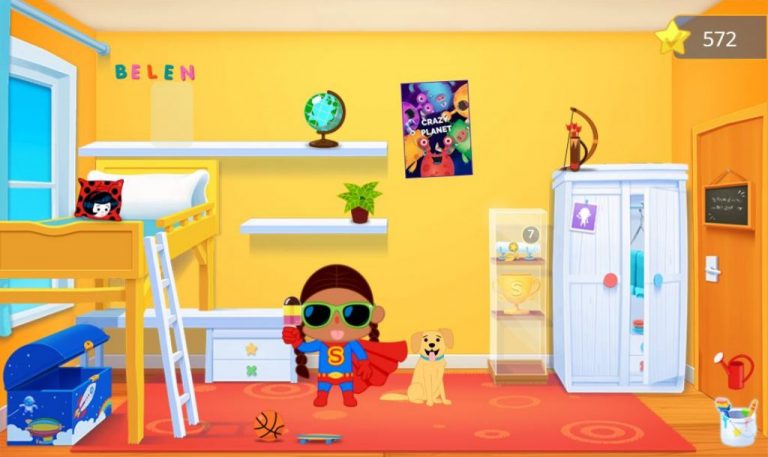Reinforcement and feedback plays an important role in the learning process as it has direct and indirect consequences on students’ behavior. Generally, positive reinforcement if used effectively, has a constructive impact on students’ behavior, commitment, and self-perception. Negative feedback, on the other hand, tends to have opposite effects (Matheson and Shriver, 2005).
The Importance of Positive Reinforcement
Positive reinforcement is offering a child a pleasant stimulus each time they issue an adequate response with the intention of reinforcing this behavior. This type of feedback reinforces the behavior of students, making them feel encouraged and interested in their immediate task and motivated to maintain their behavior (O’Connor and McCartney, 2007). Positive reinforcement also has an indirect effect on students’ perception of themselves. That is, children who receive adequate positive reinforcement develop confidence in their academic abilities. However, it is important to remember that positive feedback can have a negative effect on students’ learning. This happens when it is used without a specific purpose, too often, or when it isn’t deserved.
Negative Reinforcement
Although positive reinforcement, when used properly, can have a positive impact on students’ academic outcomes, negative reinforcement is more commonly used in the classroom, with relatively negative effects (Dobbs and Arnold, 2009). The constant use of negative comments makes students feel unworthy of praise (low self-perception) and have low intrinsic motivation. Having negative self-perception is especially worrying because scientific studies show us that self-perception has more influence on the success of students in the classroom than their actual skills (Hamre and Pianta, 2001).
Positive Reinforcement in Smartick
At Smartick we are well aware of the importance of providing positive reinforcement to our students. We are constantly evolving in this aspect, by giving special attention to the development of appropriate positive reinforcement to support children’s learning. Let’s look at some examples.
- In each session, children receive ticks as a reward for their work. This is a simple positive reinforcement that allows children to track their achievements. Additionally, with the ticks earned in each session, they can buy objects in the Virtual World to customize their avatar, pet, and room.

- Just as it is important to inform parents about the results of each session, it is also important that children receive information about how they performed in their daily sessions. Therefore, at the end of each session, a summary screen appears with their daily achievements.

- The recognition badges are another example of positive reinforcement in Smartick. These are very important to stimulate the intrinsic motivation of the child. These badges are for personal achievements, such as the Personal Record Badge for consecutive days doing Smartick sessions. Another badge recognizes a child’s streak of 20, 30, or 50 exercises solved correctly in a row with no mistakes. And another, for completing content they were stuck on or working on content at least two courses above their age.

At Smartick we know that providing adequate reinforcement is critical for supporting academic performance, promoting motivation, self-regulation, and self-efficacy, allowing students to reduce the distance between their current and desired performance. That’s why we continue to develop new reinforcements that adapt to children’s profiles and support their learning path with Smartick.
References:
- Dobbs, Jennifer, and David H Arnold. 2009. “The Relationship Between Preschool Teachers’ Reports of Children’s Behavior and Their Behavior Toward Those Children.” School Psychology Quarterly : The Official Journal of the Division of School Psychology, American Psychological Association 24 (2): 95–105. https://doi.org/10.1037/a0016157.
- Hamre, Bridget K., and Robert C. Pianta. 2001. “Early Teacher-Child Relationships and the Trajectory of Children’s School Outcomes through Eighth Grade.” Child Development 72 (2): 625–38. https://doi.org/10.1111/1467-8624.00301.
- Matheson, A.S, and M.D Shriver. 2005. “Training Teachers to Give Effective Commands: Effects on Student Compliance and Academic Behaviors.” School Psychology Review 34: 202–19.
- O’Connor, Erin, and Kathleen McCartney. 2007. “Examining Teacher-Child Relationships and Achievement as Part of an Ecological Model of Development.” American Educational Research Journal 44 (2): 340–69. https://doi.org/10.3102/0002831207302172.
Learn More:
- The Importance of Immediate Feedback in Learning
- 5 Ways to Reinforce Positive Behaviors in Your Child
- What is Math Anxiety? How Can Smartick Help?
- The Role of Emotions in Learning
- How Can Smartick Motivate Children with Math?
- Mistakes: An Opportunity to Learn - 05/07/2020
- The Importance of Positive Reinforcement in Education - 04/02/2020
- Is It True That Boys Are Better at Math Than Girls? - 03/05/2020







